1 January
Eastern Front, Czechoslovakia
The Soviet 2nd and 4th Ukrainian Fronts begin an offensive against the German Army Group Center in Czechoslovakia. The German-held area contains the last foreign industrial resources under the control of the Third Reich. The Soviet Fronts between them have 853,000 men, 9986 guns, 590 tanks, and 1400 combat aircraft. German forces total 550,000 men, 5000 guns, and 700 combat aircraft. Despite German fortifications and resistance, the Red Army makes good progress.
1-21 January
Western Front, France
In a follow up to the attack in the Ardennes sector, General Johannes von Blaskowitz’s Army Group G attacks the US Seventh Army in Alsace and Lorraine, forming the so-called Colmar Pocket. The Americans retreat, although General Dwight D. Eisenhower, commander-in-chief of Allied forces in Europe, orders Strasbourg to be held after the leader of the Free French, General Charles de Gaulle, expresses concern that the loss of the city would affect French morale. The fighting is bitter. It costs the US 15,600 casualties, and the Germans, 25,000.
1-27 January
Far East, Burma
The Chinese units of Lieutenant General Daniel Sultan’s Northern Combat Area Command and Marshal Wei Lihuang’s Y Force link up in northern Burma in the face of significant resistance from the Japanese 56th Division.
2 January
Technology, united states
An American Sikorsky helicopter is used in convoy escort duties for the first time.
3-4 January
Pacific, Ryukyus
The US 3rd Fleet attacks Japanese targets on Formosa, destroying 100 enemy aircraft.
3-16 January
Western Front, Ardennes
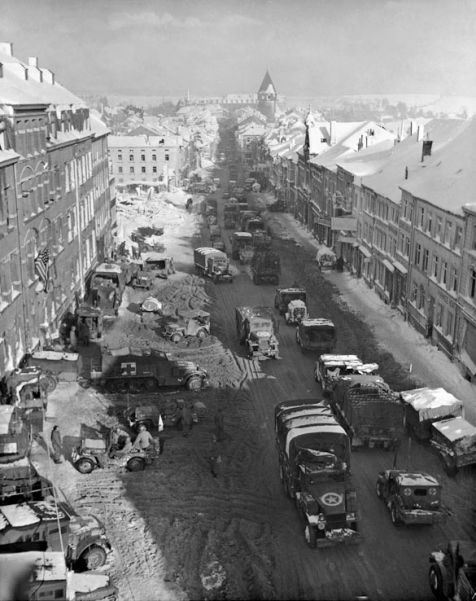
The last German attack against Bastogne is defeated. The Allied counterattack begins: on the northern flank the US First Army attacks the northern sector of the ‘bulge,’ while the southern sector is assaulted by the US Third Army. In the ‘bulge’ itself, Hitler orders a German withdrawal to Houffalize on the 8th. However, in the face of overwhelming Allied superiority in men and hardware the Germans are forced to retreat farther east, and the US First and Third Armies link up at Houffalize on the 16th.
4 January
Far East, Burma
Units of General William Slim’s British Fourteenth Army make an unopposed landing on the island of Akyab, securing the port and the airfield.
4-6 January
Pacific, Philippines
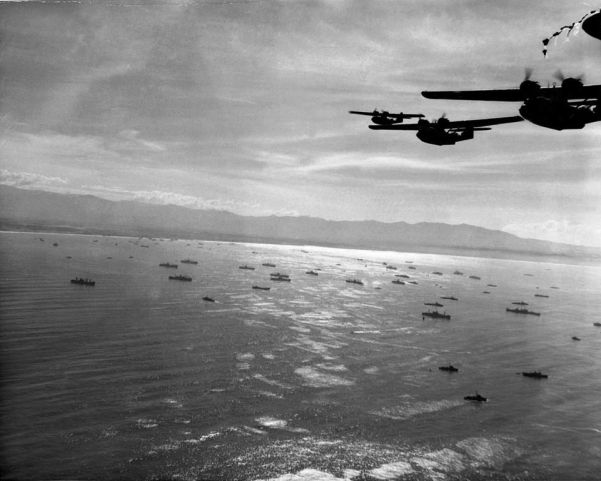
Prior to the landings on Luzon, the Japanese launch a series of kamikaze attacks on ships of the US 7th Fleet. Over 1000 Americans and Australians are killed in the suicide attacks, a minesweeper is sunk, and more than 30 other vessels are damaged.
5 January
Air War, Belgium/Holland
The Luftwaffe launches Operation Bodenplatte in support of the Ardennes offensive with 1035 fighters and bombers attacking Allied airfields in Belgium and southern Holland. The Germans destroy 156 Allied aircraft but lose 277 of their own, losses the Luftwaffe cannot make good. It is the last major German air attack.
7 January
Eastern Front, Hungary
German forces capture Esztergom, northwest of Budapest, a Nazi National Redoubt, in their attempt to relieve the garrison in the capital.
9 January
Pacific, Philippines
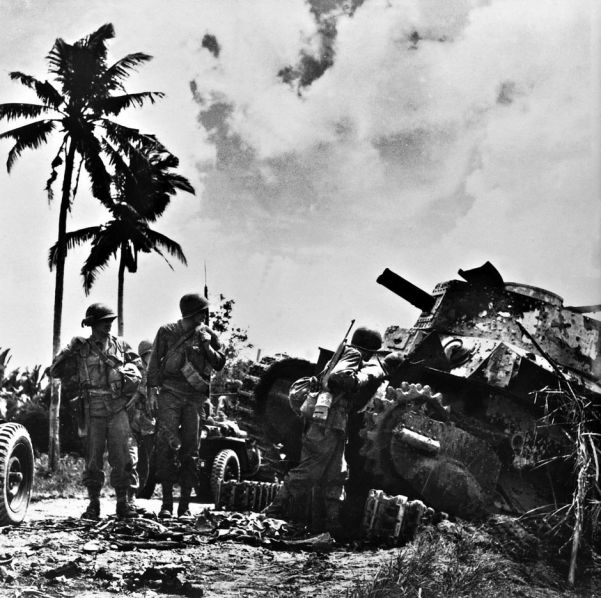
Preceded by a heavy bombardment, units of the US Sixth Army, commanded by Lieutenant General Walter Krueger, make unopposed amphibious landings on Luzon.
10 January-10 February
Eastern Front, Czechoslovakia
With the Red Army on their soil, Czech partisans begin to attack German units and supply lines.
12-17 January
Eastern Front, Poland
The Red Army begins its Vistula-Oder offensive. Soviet forces total over two million men: Marshal Georgi Zhukov’s 1st Belorussian Front, Marshal Ivan Konev’s 1st Ukrainian Front, and General Ivan Petrov’s 4th Ukrainian Front. In addition, Marshal Konstantin Rokossovsky’s 2nd Belorussian Front and General Ivan Chernyakhovsky’s 3rd Belorussian Front are providing tactical and strategic cooperation. The Soviets make excellent progress, and by the 17th, Zhukov’s Second Guards Tank Army has reached Sochaczew.
To the north, the 1st Baltic, 2nd Belorussian, and 3rd Belorussian Fronts launch an offensive into East Prussia on the 13th.
14 January
Far East, Burma
The 19th Division, part of Lieutenant General William Slim’s British Fourteenth Army, crosses the Irrawaddy River at Kyaukmyaung but is then violently attacked by Japanese troops holding the line of the waterway. Forced back by hordes of infantry with fixed bayonets, the division manages to hold the bridgehead in the face of the fierce onslaught.
15-26 January
Western Front, Germany
After the containment of the German Ardennes offensive, the Allies launch a large counterattack against the Germans. In the north, Field Marshal Bernard Montgomery’s British 21st Army Group presses into the Roermond area, while farther south General Omar Bradley’s US 12th Army Group approaches the upper Roer River.
16 January
Far East, Burma
In the north of the country, General Daniel Sultan’s Chinese New First Army occupies Namhkan. The last Japanese positions threatening the Burma Road have been eradicated.
18-27 January
Eastern Front, Hungary
The German IV SS Panzer Corps launches an offensive to relieve Budapest. In the face of Soviet resistance, it reaches the Vali River on the 22nd, only 15 miles (24 km) southwest of the city. However, the momentum of the attack had been halted by the 25th, and two days later the Red Army counterattacks with 12 rifle divisions and strong armored support, effectively ending the German Budapest relief operation.
18 January-3 February
Far East, Burma
A vicious battle develops at Namhpakka between the Japanese 56th Division, which is retreating to Lashio, and the American Mars Brigade.
19 January
Eastern Front, Poland
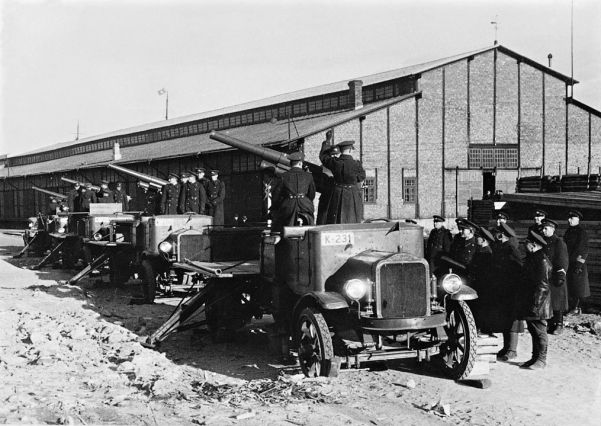
Following heavy fighting, units of the 1st Ukrainian Front liberate Cracow, the former capital of Poland. The German Third and Fourth Panzer Armies are now isolated in East Prussia, and the German Front is falling apart in the face of immense pressure.
21 January
Far East, Burma
The island of Ramree is invaded by the British 71st Brigade. Japanese resistance is virtually non-existent, although it stiffens as Allied troops push farther inland. The island is not cleared until the middle of February, by which time General William Slim has an invaluable base for future long-range operations against Rangoon.
23 January
Eastern Front, East Prussia
The Soviet 2nd Belorussian Front cuts all road and rail crossings across the Vistula River, isolating German units on the east bank.
Eastern Front, Poland
The Soviet Second Guards Tank Army, part of the 1st Belorussian Front, storms the fortified town of Bromberg, an important strongpoint in the German Poznan Line.
27 January
Eastern Front, Poland
The Red Army liberates the Nazi death camp at Auschwitz. The SS has evacuated the camp nine days previously, taking 20,000 weak inmates with them. Those left number a few hundred disease-ridden inmates in the camp’s hospital block.
Far East, Burma
Units of the Allied Y Force, pushing across the Shweli River at Wanting, reopen the Burma Road supply route into China.
28 January
Western Front, Ardennes
The last vestiges of the German ‘bulge’ in the Ardennes are wiped out. The total cost to the Germans in manpower for their Ardennes offensive has been 100,000 killed, wounded, and captured. The Americans have lost 81,000 killed, wounded, or captured, and the British 1400. Both sides have lost heavily in hardware - up to 800 tanks on each side. The Germans have also lost around 1000 aircraft. However, whereas the Americans can make good their losses in just a few weeks, for the Germans the military losses are irreplaceable.
28 January-1 February
Western Front, Ardennes
Two corps of General Courtney Hodges’ US First Army and one from General George Patton’s US Third Army try to penetrate the German defenses northeast of St. Vith, which lies astride the Losheim Gap. Snow and ice inhibit progress, and the Germans manage to fight back hard, thereby slowing the rate of the US advance.
29 January
Pacific, Philippines
Major General Charles Hall’s US XI Corps lands unopposed on the west coast of Luzon just to the north of the Bataan Peninsula.
30 January
Eastern Front, Germany
The left wing of the 1st Ukrainian Front has reached the Oder River and some of its units have set up bridgeheads on the west bank. This ends one of the greatest strategic operations of the whole war.
The Red Army has advanced 355 miles (568 km), liberated all of Poland and a large part of Czechoslovakia, reached the Oder on a broad Front, and is only 100 miles (160 km) from Berlin. In its offensive, it has inflicted losses of 500,000 dead, wounded, or captured on the Germans, and captured 1300 aircraft, 1400 tanks, and over 14,000 guns of all calibers.
31 January
Pacific, Philippines
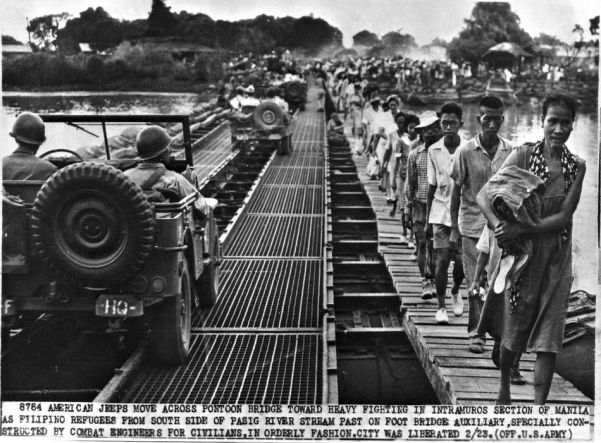
Elements of the US 11th Airborne Division go ashore at Nasugbu Bay against light Japanese resistance. The US troops land just 50 miles (80 km) southwest of the capital Manila, which is their ultimate objective.
31 January-21 February
Far East, Burma
The British 36th Division effects a crossing of the Shweli River at Myitson following a savage battle against the Japanese. The division’s success threatens the Japanese northern approaches to the Mandalay Plain.
